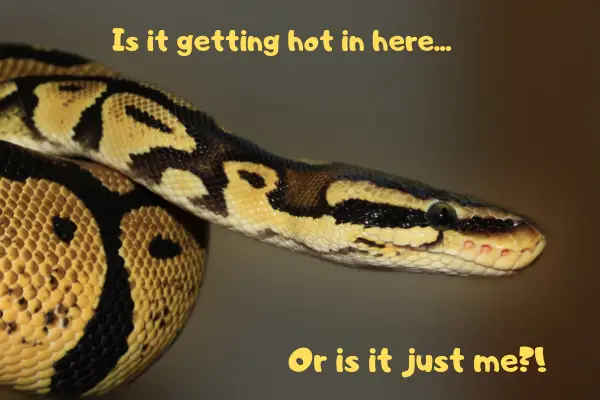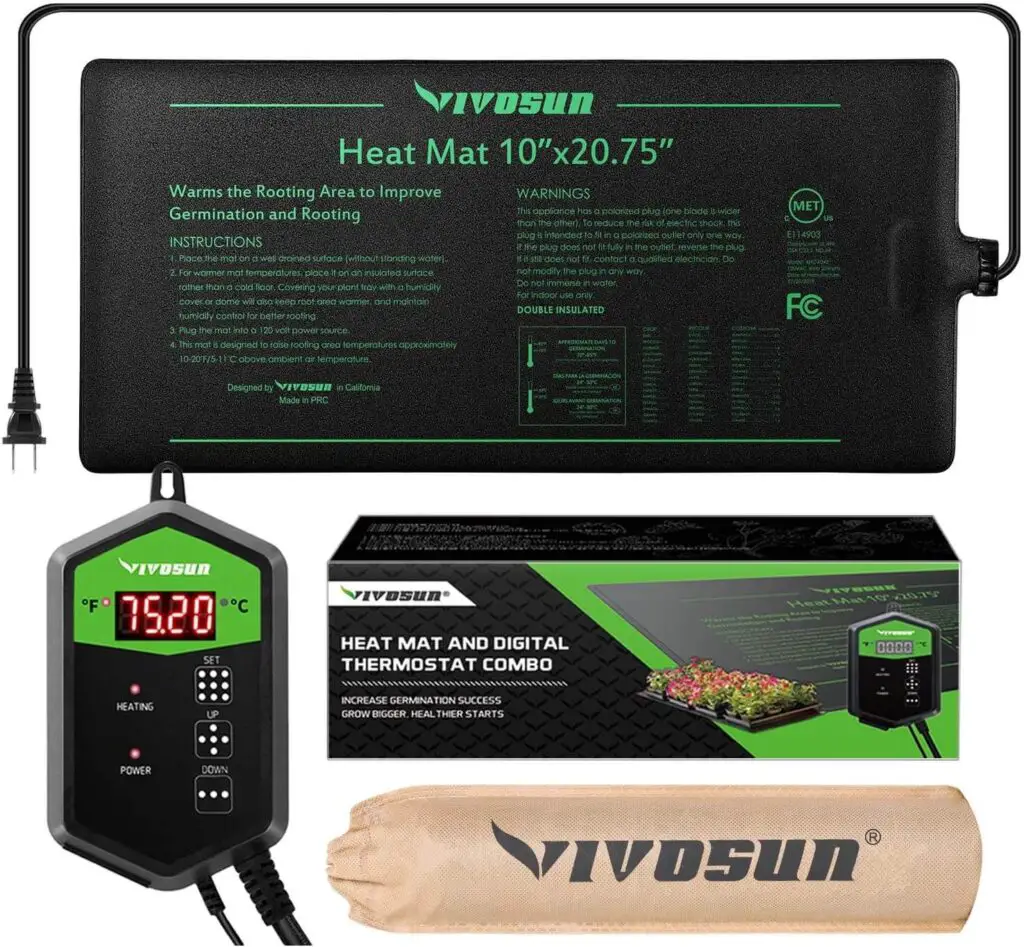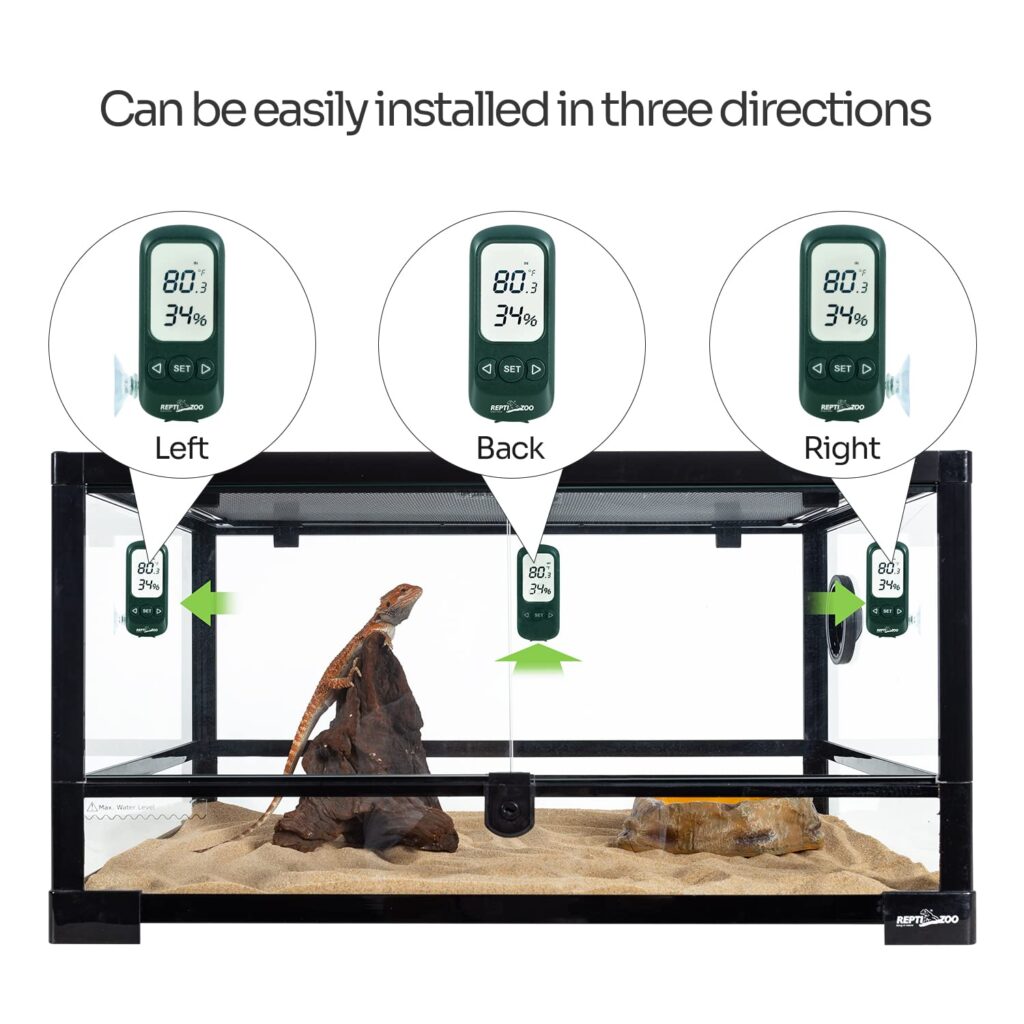Ball python humidity and temperature aren’t the most exciting topics when it comes to keeping a pet ball python. That being said, your ball pythons heating and humidity requirements are extremely important to the health of your snake.
Ball pythons come from sub-Saharan Africa. This means that we need to replicate this environment as best we can. This includes heating your ball python enclosure as well as ensuring the right humidity level for your ball python. In this post, this is exactly what you’ll learn!

Table of Contents
Ball python heating
Ball pythons are reptiles and this means that they are cold-blooded. This means that they cannot regulate their body temperature themselves, but need an external heat source to warm up, as well as a cooler spot to cool down. This is called thermoregulation.
So, what heat source is best for a ball python? – You have a few options…
What heat source to choose for ball python?
- Heat mat/tape
In general, this is the best option to use. Using a heat mat or heat tape ensures a safe method for heating the floor in your ball python’s enclosure, without excessively heating the air in the enclosure along with it. We recommend this heat mat. It’s easy to use and has a temperature gauge, and it has the most reviews

Ball pythons do not bask in the sun like other animals, but they do love to slither along the hot sand after the sun has set in order to heat up their core temperature.
Heat mats allow for much better temperature regulation, as they can be connected to a thermostat. This prevents the temperature from rising or falling to dangerous levels. Heat mats also don’t heat up the air in the enclosure as much, which prevents the rest of the terrarium from overheating.
Another advantage of heat mats is that you can heat a much more specific part of the enclosure. By heating around 1/3 of the enclosure, you ensure there is a smooth temperature gradient for your snake to enjoy.
Always place your heat mat underneath the enclosure and not in it. The heat will pass through the enclosure and the substrate, and this will further prevent any problems with overheating.
- Heat bulbs/lighting
Heat lamps aren’t ideal. Some people argue that it’s a more natural heat source, but ball pythons don’t really bask. This means they are used to absorbing their heat from the floor, not from above.
A heat lamp can be useful if you live in a very cold country and need to heat the inside of the terrarium too. However, if this isn’t the case then it can cause the terrarium to overheat, especially if it’s a small terrarium.
You can go with heat bulbs and your ball python can live healthily under heat lamps, but it’s not the ideal setup. They can be used supplementary though to provide some variation.
- Heat rocks
Don’t use heat rocks since there have been a lot of accidents reported surrounding their use. They are difficult to regulate the temperature on and often result in burns on your pet. It’s best to go with a heat mat, possibly with a supplementary lamp but stay away from the heat rocks.
Ball python temperature
Ball pythons need relatively warm temperatures to flourish. Their basking temperature/ground temperature should be around 89-97 degrees Fahrenheit (31.5 – 36.1 degrees Celsius). This helps them to warm up their body and stomach, aiding in digestion and movement.
The air temperature should be around 79 – 83 degrees Fahrenheit (26.1 – 28.3 degrees Celsius). a slight gradient between the hot and cold side of the enclosure is normal. At night, the temperatures can be lowered slightly to help simulate a natural temperature drop, but not to any extremes.
Always use 2 different thermometers to keep track of the temperature. First, use a digital pointing thermometer which will help you read the ground temperature. This is a tool that every reptile keeper should own as it’s the best way of measuring the temperature of the ground in the enclosure.
To measure the air temperature, you can stick a thermometer onto the glass and just read it whenever you check up on your ball python.
Ball python humidity
Ball python humidity isn’t an exact science. Luckily, ball pythons aren’t the most challenging reptiles when it comes to humidity levels. A humidity level of between 50 and 65% works great, but ideally, you’ll want it around 55-60%.
We recommend a Reptile Thermometer Hygrometer, it has a digital gauge and tell you the humidity too see on amazon here

This can usually be achieved by using the right substrate and providing a large water dish. You can play around with the location of your water dish to manipulate the humidity levels, moving it more towards the heat source in order to increase the rate of evaporation.
The closer it is to the heat pad, the more of the water that will evaporate and higher the humidity will be.
A good hygrometer will help you to measure humidity levels in the enclosure.
You can also choose to mist the enclosure every once in a while to keep the humidity at the right levels. A short spike or drop isn’t an issue in this case.
If you do mist the enclosure, try to prevent the water from getting on the bedding. Ball pythons need air humidity and not ground moisture. A wet substrate can lead to things like scale rot which is extremely unpleasant for your animal!
When it comes to shedding, humidity can be temporarily raised to 65 to 70% to aid in the shedding process. An alternative to this is to provide a humid hide though.
Humidity box/hide
Providing your ball python with a humidity box/hide is also a great way of letting them regulate their humidity.
In the wild, ball pythons will use things like termite mounds in order to find more humid air to aide in the shedding process. You can simulate this by creating a humid hide for your snake.
Use sphagnum moss to provide the humidity in the hide. This is fine in a single extra hide you place into your ball python’s terrarium when shedding. Your ball python will be able to leave whenever they feel like it and regulate the humidity they need themselves. This prevents the issues that a wet floor causes.
Ball python lighting
Ball pythons don’t need special lighting as the normal light entering the room they are kept in usually works fine.
Some ball python keepers light enclosures to make the difference between day and night more pronounced though, and this is definitely an option. It can also make it much easier to look inside your ball python enclosure, depending on where it’s setup.
FAQ’s
Can ball pythons have too much humidity?
Yes. Peaks and dips usually don’t matter too much as these happen naturally in the wild too. The problem is if high levels of humidity happen constantly. This can cause respiratory infections in your snake.
How hot is too hot for a ball python?
Again, dips and spikes usually aren’t a problem, as the temperature in the wild changes a lot too. Temperatures above 39-40 degrees Celsius (86 degrees Fahrenheit) are really pushing it and shouldn’t be used as a constant temperature for your ball python. As long as you maintain a good heat gradient and plenty of options for them to hide in/under, the exact ground temperature at the hot side isn’t too sensitive. Just try to keep it around the recommended temperature.
Do ball pythons need heat lamps?
Ball pythons do not need heat lamps if they have another heat source, like a heat mat. Heat mats are preferred over heat lamps as they don’t heat up the air as much and can be fitted with a thermostat to regulate the temperature more easily.
Do ball pythons need light at night?
Ball pythons do not need light at night. Obviously, in the wild, these snakes can’t light a candle or turn on the light switch ?
What temperature is too cold for ball pythons?
Temperatures below 75 degrees Fahrenheit are considered too cold for ball pythons. However, it’s best to stick to the temperature indications in this blog post.
Conclusion
As you can see, there’s quite a lot to talk about when it comes to ball python heating and humidity. At least now you have all the information you need to provide your ball python with the perfect conditions!
Want to learn more about ball python care? Check out our ball python care guide to learn everything you need to know about their care!
